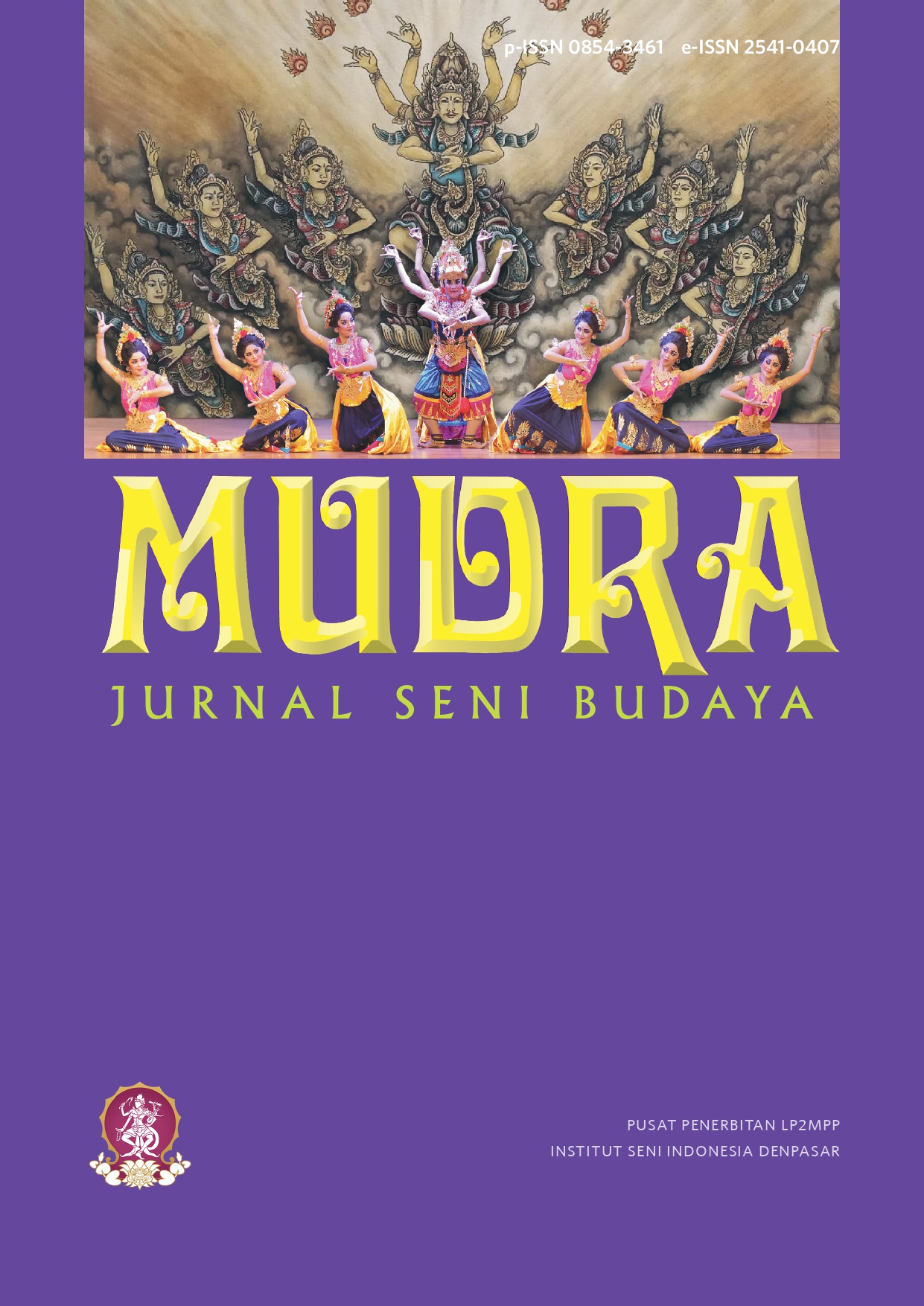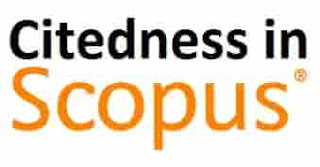Harmony of Culture and Education: A Content Analysis of the Role of Banjar Songs in Shaping Pancasila Student Profile
DOI:
https://doi.org/10.31091/mudra.v40i3.2227Keywords:
Content Analysis, Banjar Song, Pancasila Student Profile, Merdeka CurriculumAbstract
The Pancasila Student Profile embodies Indonesian students as lifelong learners who have global competence and behave according to the values of Pancasila. The Pancasila Student Profile can be achieved through folk songs. Banjar folk song, as one of the art forms produced from the culture originating from the South Kalimantan region, has an appropriate meaning and can be used to realise the Pancasila Student Profile. The purpose of this research is to analyse the needs of Banjar songs to obtain data and information about: (1) Banjar songs that are relevant to the Pancasila Student Profile; (2) The needs of students in shaping the character of the Pancasila Student Profile through banjar songs; (3) Character values presented in banjar songs. This research was conducted in stages: planning, data collection, reduction, and conclusion drawing. Data analysis used a qualitative descriptive method. The results showed that: (1) Banjar songs have values and meanings that are relevant to the character building of Pancasilais students; (2) Students need Banjar songs in growing the character of Pancasilais students; This finding has confirmed that Banjar songs are a product of mass culture, namely works of art produced from the cultural ecosystem. Thus, Banjar songs can be an alternative in shaping the character of Pancasila students; (3) Banjar songs have character values of noble character, global diversity, cooperation, independence, critical and creative reasoning that are relevant to the elements of the Pancasila Student Profile.Downloads
References
Kemendikbud Ristek, “Profil Pelajar Pancasila,” Kementerian Pendidikan dan Kebudayaan, pp. 1–108, 2021, [Online]. Available: http://ditpsd.kemdikbud.go.id/hal/profil-pelajar-pancasila
E. R. Z. Rusma Noortyani, “Nilai Karakter Dalam Teks Lagu Banjar (the Character Value on the Text of the Banjarese Song),” Jurnal Bahasa, Sastra Dan Pembelajarannya, vol. 9, no. 1, p. 71, 2019, doi: 10.20527/jbsp.v9i1.6250.
Mangihut Siregar, “Teori Gado-gado Pierre-Felix Bourdieu,” An1mage Jurnal Studi Kultural, vol. 1, no. 2, pp. 79–82, 2016, [Online]. Available: https://journals.an1mage.net/index.php/ajsk/article/view/61
S. Hadi and Sulisno, “Popular banjar song: Study on music form and media culture,” Harmonia: Journal of Arts Research and Education, vol. 21, no. 1, pp. 168–177, 2021, doi: 10.15294/harmonia.v21i1.29349.
V. F. Musyadad, H. Hanafiah, R. Tanjung, and O. Arifudin, “Supervisi Akademik untuk Meningkatkan Motivasi Kerja Guru dalam Membuat Perangkat Pembelajaran,” JIIP - Jurnal Ilmiah Ilmu Pendidikan, vol. 5, no. 6, pp. 1936–1941, 2022, doi: 10.54371/jiip.v5i6.653.
D. Irawati, A. M. Iqbal, A. Hasanah, and B. S. Arifin, “Profil Pelajar Pancasila Sebagai Upaya Mewujudkan Karakter Bangsa,” Edumaspul: Jurnal Pendidikan, vol. 6, no. 1, pp. 1224–1238, 2022, doi: 10.33487/edumaspul.v6i1.3622.
D. Rizki and W. Lestari, "Komunikasi Dalam Pola Asuh Orang Tua Terhadap Gaya Belajar Siswa Kelas V Sdn Sukamukti," Didaktik : Jurnal Ilmiah PGSD STKIP Subang, vol. 7, no. 01, pp. 36-48, 2021, doi: 10.36989/didaktik.v7i01.162.
K. Kamariah and N. Ngalimun, "Struktur Dan Fungsi Lagu Banjar Karya H. Anang Ardiansyah," AL-ULUM : Jurnal Ilmu Sosial dan Humaniora, vol. 7, no. 1, pp. 88-101, 2021, doi: 10.31602/alsh.v7i1.4687.
S. Hadi, “Estetika Lagu Banjar Populer: Suatu Representasi Kultural, Pengalaman Eksistensial, dan Nilai Sosial Masyarakat Banjar,” KAMBOTI: Jurnal Sosial dan Humaniora, vol. 1, no. 2, pp. 106–113, 2021, doi: 10.51135/kambotivol1iss2pp106-113.
M. Tahir and M. I. Nasir, “ANALYSIS OF THE PHRASE BISMILLAH (A THEMATIC-COMPARATIVE METHOD BETWEEN AL-TABARI’S INTERPRETATION AND THE HADITH PERSPECTIVE),” TAFASIR: Journal of Quranic Studies, vol. 2, no. 1, pp. 1–11, Jun. 2024, doi: 10.62376/tafasir.v2i1.30.
F. Yahya, S. binti Mat, and S. L. Panduragan, “A MODEL OF ISLAMIC SPIRITUALITY: A SYSTEMATIC SCOPING REVIEW,” International Journal of Medical and Exercise Science, vol. 08, no. 04, pp. 1384–1394, 2022, doi: 10.36678/IJMAES.2022.V08I04.003.
Sus Shalawati and Ainur Rofiq Sofa, “Revitalisasi Nilai Al-Qur’an dan Hadits dalam Pembentukan Etos Kerja, Profesionalisme, Spiritualitas, Inovasi, Keseimbangan Sosial, dan Keberlanjutan Muslim Modern,” Jurnal Budi Pekerti Agama Islam, vol. 3, no. 1, pp. 201–214, Dec. 2024, doi: 10.61132/jbpai.v3i1.886.
A. Suryadi, S. Ondeng, and S. Syahruddin, “CHARACTER DEVELOPMENT FROM THE VIEWPOINT OF ISLAMIC TEACHINGS,” JURNAL RISET PENDIDIKAN DAN PENGAJARAN, vol. 3, no. 2, pp. 208–215, Sep. 2024, doi: 10.55047/jrpp.v3i2.780.
M. Miswari, S. Soesanto, R. Rusdarti, and T. Prihatin, “Implementasi Kurikulum Pendidikan Kecakapan Hidup pada SMK Askhabul Kahfi Semarang,” pp. 661–665, 2020.
H. D. Pingge, “KEARIFAN LOKAL DAN PENERAPANNYA DI SEKOLAH CORE View metadata, citation and similar papers at core.ac.uk provided by Jurnal STKIP Weetebula,” Jurnal Edukasi Sumba, vol. 01, no. 02, pp. 128–135, 2017.
A. J. Juliani and A. Bastian, “Pendidikan Karakter Sebagai Upaya Wujudkan Pelajar Pancasila,” pp. 257–265, 2021.
M. Lauterboom, “Imajinasi Poskolonial dan Interdependensi Pembebasan dalam Upaya Pendidikan Agama Kristen yang Interreligius-Interkultural di Indonesia,” KENOSIS: Jurnal Kajian Teologi, vol. 10, no. 2, Oct. 2024, doi: 10.37196/kenosis.v10i2.1190.
Darmawati Jufri and St. Wardah Hanafie Das, “The Nature of Multicultural Education in Indonesia: A Perspective on Islamic Education,” Harmony Philosophy: International Journal of Islamic Religious Studies and Sharia, vol. 1, no. 4, pp. 01–14, Dec. 2024, doi: 10.70062/harmonyphilosophy.v1i4.26.
H. I. Asysyddiqi, H. Madihah, and A. Rahmi, “Strategi Kepemimpinan Kepala Madrasah Meningkatkan Kinerja Guru Melalui Nilai Kayuh Baimbai,” Hikmah, vol. 20, no. 2, pp. 383–394, Dec. 2023, doi: 10.53802/hikmah.v20i2.311.
D. A. Pratiwi, Noorhapizah, A. R. Agusta, and D. R. Azzahra, “The Development of Elementary School Teaching Materials Based on Pancasila Students to Improve the Character of Kayuh Baimbai,” 2023, pp. 109–119. doi: 10.2991/978-2-38476-096-1_13.
S. Sumitro, Agung Firmansyah, Micha Fiedlschuster, Wafa Affaghrou, and Johnas Amon Buhori, “Social Solidarity in the Tradition of Mutual Cooperation: Indonesia Cultural Heritage,” Journal of Social and Humanities, vol. 2, no. 2, pp. 135–141, Sep. 2024, doi: 10.59535/jsh.v2i2.411.
S. Wahyuni, J. Junaidi, and M. Mustangin, “Integration of Gotong Royong Indonesian Culture in Assessing Students’ Social Attitudes,” in Proceedings of the 2nd Workshop on Language, Literature and Society for Education, EAI, 2019. doi: 10.4108/eai.21-12-2018.2282785.
T. Arbain, “The Heritage of Banjar Kingdom from the Perspective of Social Inclusion and Entrepreneurship Education,” in Proceedings of the 1st South Borneo International Conference on Sport Science and Education (SBICSSE 2019), Paris, France: Atlantis Press, 2020. doi: 10.2991/assehr.k.200219.057.
Wasita, “Warisan Sikap Toleran Masa Kesultanan Banjar dan Keberlanjutannya Untuk Masyarakat Lokal Sekarang,” PANALUNGTIK, vol. 3, no. 2, pp. 87–103, Dec. 2020, doi: 10.24164/pnk.v3i2.48.
N. Khairun, M. Oktari, N. Sari Tarigan, S. Erina Fitri, and R. Hasanah, “The Dangers of Procrastination for Learners,” BICC Proceedings, vol. 1, pp. 121–127, Sep. 2023, doi: 10.30983/bicc.v1i1.42.
V. Cerneavschi, “Academic procrastination: determinants and effects on educational performance,” Vector European, no. 2, pp. 181–185, Nov. 2024, doi: 10.52507/2345-1106.2024-2.32.
D. R. Riana, “Meneroka Budaya Banjar Melalui Pentas Musik Panting: Suatu Kajian Etnopuitika,” Kelasa, vol. 14, no. 2, pp. 243–258, 2020, doi: 10.26499/kelasa.v14i2.9.
H. Jordi Andrea, Fitri Sakinah,Nurhizrah Gistituat, “MERDEKA BELAJAR DALAM REVOLUSI PENDIDIKAN INDONESIA DI ERA DISRUPSI,” Pendas: Jurnal Ilmiah Pendidikan Dasar, vol. 15, no. 1, pp. 37–48, 2024.
W. Subroto and D. F. Nadilla, “Gender Representation In Banjar South Kalimantan Regional Song Lyrics,” International Journal of Multicultural and Multireligious Understanding, vol. 11, no. 5, p. 83, May 2024, doi: 10.18415/ijmmu.v11i5.5714.
A. Humaedi, “Nilai Budaya dalam Lagu Banjar: Pernikahan, Mata Pencaharian, dan Permainan Tradisional,” Stilistika: Jurnal Bahasa, Sastra, dan Pengajarannya, 2016.
S. Hadi, Maryanto, and Sulisno, LAGU BANJAR POPULER : Banjarmasin: CV. Artikata, 2021.
M. Alimi, Biosemiotika dalam Lirik Lagu Banjar. Banjarmasin: Universitas Lambung Mangkurat, 2024.
S. Mahmudah, “Nilai Budaya Dalam Lirik Lagu Banjar Karya Syarifuddin MS.pdf,” 2016.
S. Widiantho, "Resistensi Lagu Banjar : Sebuah Kajian Kesadaran Budaya Lokal," Pelataran Seni, vol. 8, no. September, pp. 119-134, 2023.
L. Lismawati, “Representasi Kearifan Lokal Dan Filosofi Dalam Syair Lagu Banjar (Representation of Local Wisdom and Philosophy in the Banjar Song Lyric),” Jurnal Bahasa, Sastra Dan Pembelajarannya, vol. 12, no. 2, p. 342, 2022, doi: 10.20527/jbsp.v12i2.14544.
H. C. Adi Kistoro, B. Benny, W. Warnis, S. Ulfah, and F. Zuhrah, “Character learning model based on traditional songs in Indonesia,” International Journal of Evaluation and Research in Education (IJERE), vol. 13, no. 6, p. 4201, Dec. 2024, doi: 10.11591/ijere.v13i6.25877.
Downloads
Published
How to Cite
Issue
Section
License
Copyright (c) 2025 Susyam Widiantho, Wadiyo Wadiyo, Tjetjep Rohendi Rihidi, Soesanto

This work is licensed under a Creative Commons Attribution-NonCommercial-ShareAlike 4.0 International License.
- Copyright on any open access article in a journal published by Mudra Jurnal Seni Budaya is retained by the author(s).
-
The Creative Commons Attribution License 4.0 formalizes these and other terms and conditions of publishing articles.










